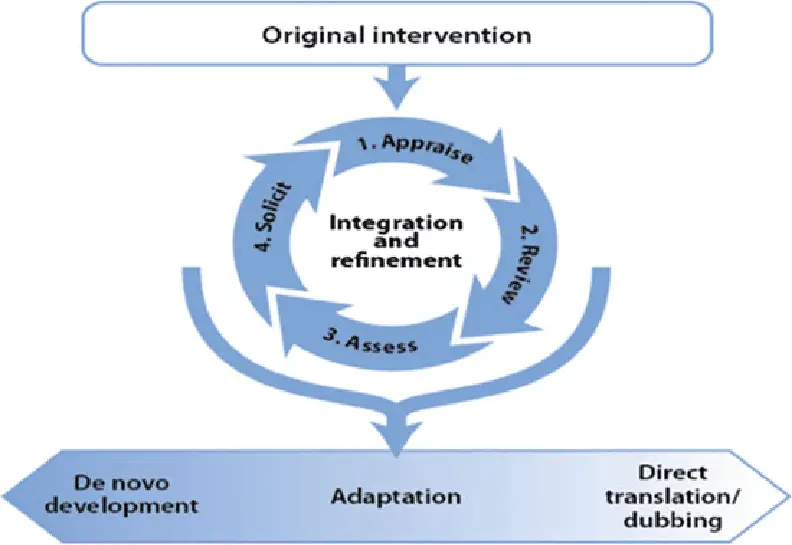
Why Should We Adapt Translations For Dubbing To Different Cultures?
The process of film dubbing has grown to be a sort-after process in film production. While it is still unknown to many people, film production houses always prefer to use subtitles on their films as a way of localizing their content to cut across boards. After a lot of research, and I concluded, and it’s a reality that many people don’t enjoy reading subtitles when watching films and thus why film production houses have opted to use the dubbing process more compared to the subtitling one. Did you know that an audience wouldn’t be able to tell whether a film is original or dubbed depending on how well one does the dubbing? Before I got into the film dubbing industry, I constantly watched a lot of dubbed films without even knowing that I was interacting with dubbed content. That is how I knew this process was being executed impeccably.
So how does one make sure that they have dubbed their film in the best way possible, you may ask? A lot of factors go into ensuring that you carry any dubbing process out to perfection and beyond. From ensuring that the text translation is on point, to make sure you get the best possible and suitable voice actors for all the actors on the original film to also making sure that they play their roles perfectly and to eventually making sure that the recorded (dubbed) voices synchronized with the original film perfectly. You can see that it’s a lot of steps that go into ensuring that a film perfectly dubbed. In this article, we will look at the translation bit. You might have an amazing group of voice actors, but if the translation from the original language to the target language bad, then the whole process will end up being useless.
There are a lot of factors that come into play when one is looking to do a translation for a film. We all know that translation deals with languages and different languages have different cultural beliefs. This is one of the main things that translation focuses on. As a film producer, the main reason you would want to dub your film into a specific language is so you can create a fan base in that other language. Imagine ending up offending your target market because a certain translated scene did not sit well with their cultural beliefs or worse enough ended up being offensive? That is just one factor that one needs to look into when providing a translation for film dubbing, and we will look at them in-depth on this article.
What Cultural And Linguistic Features That Come To Play In Film Dubbing Translation?
Below are the cultural and linguistic features that come to play when dealing with film dubbing translation:
- Culture-specific references: When translating from one language to another, the translator must know the two languages he or she is working on are different in culture. Whatever is specific to a particular language is definitely not specific to the other language. Things like institutions, hospitals, sports and pastimes, food and drink, events, festivities, famous people, personalities and many more. There are things to consider unless stated otherwise by the production team. Not taking this into consideration ends up giving the translated language a context that is not relatable to them or differs totally from the original language context. A translator must note that and eventually decide on how to deal with the issue at hand, depending on the particular case.
- Language-specific features: This is another important factor. There are specific features exclusive to certain languages and may not apply in other languages. During translations, the translator should take this into consideration. One thing is for sure if you are working with a professional translator who has worked on such kinds of projects then they already know that they should take such factors seriously. However, if not then you as a production director should make it known to them. Some language features I am talking about are things like language variation, forms of address and endearment, taboo language and so on and so forth, etc. An example of this would be the polite forms of address in English and Spanish. While the first language would commonly use “Mr.” or “Mrs.” to address somebody unknown or as a sign of respect, the “equivalent” use of “Señor” and “Señora” may not always work in a translation, mainly because of them becoming less used than before. On such an occasion the translator has no choice but to make sure he gets the best word to work, hand in hand, and still maintain the meaning and context of the original language.
- Borderline features: These are features that don’t fit into the cultural and language features because they are general but also require the target audience to note that they are general terms that can carry a specific meaning or message depending on the language that they are in. It requires the target audience to possess a high understanding of culture-specific references and lingua-specific features. The borderline features are things like metaphor, idioms, allusions, verbally expressed humor, songs, rhymes, poetry, and gestures. A good example would be how it is disrespectful to chew, while in other countries it is not. Here, it is really the translator’s job to ensure that he translates and relays the intended message correctly.
- Visual features: These are specific visual representations that hold a specific meaning to a particular language that an audience from another language would most probably not understand. A good example would be Poppies which have a significant meaning in the UK and other Commonwealth countries, we have used them as a remembrance symbol since 1921 to commemorate soldiers who have died in the war. I am sure that a poopy will not have this same meaning for a Spanish public unless somebody has specific knowledge about it, but that would be an exception. It’s very rare to find someone who knows specific facts about a language that is not theirs or they have never been interested in. However, this is their own classification adapted for their own purposes and, therefore, the analysis that in this work will make a difference. In such situations, the best thing is to either add a prior explanation of what specific visual features mean and represent.
How Do You Deal With Translation Problems In Film Dubbing?
We will go further and try to see different things you can do to curb some problems and hurdles that come with translating for film dubbing:
- Adaptation: This is the technique in which one can replace the original word with another word that means the same thing, or rather represents the same thing in the target language. This though only mainly works for normal translations that do not have any visual representation. It might not always work for dubbing because of the visual channel that might present with the translated voice-over.
- Compensation: This is the technique in which the word says the translator tried to compensate with something that will have close meaning to the original statement. This would usually happen, for instance, where it is hard to translate from one language to another. A lot of translators usually use this technique, which always ends up being the best way to translate certain phrases or statements. The most important thing is to always keep the context intact.
- Established equivalent: There are certain phrases that may not have a direct translation, but according to the dictionary, they might possess the same meaning. Translators usually use this technique in such instances where they only have to maintain context and the meaning the original knowledge was after. This though might not work the same way for dubbing because of the possibility of the translated text to have more words or fewer words compared to the original and synchronization might be a problem.
- Generalization: This might be the main technique a lot of translators use. It is equally the easiest to use and works perfectly for both dubbing and general translations. This is where one may use a more general or neutral term that has the same meaning as the original term. Getting a native speaker translator works wonders for this technique because chances are they know more words than a translator who is not a native speaker. A good example is translating the French terms guichet, fenêtre or denture -all different windows or windows in English.
- Borrowing: This technique means exactly what it represents. It’s the technique of borrowing words and terms that have the same meaning, even if the translation might not be direct. This technique makes translation super easy because the translator doesn’t have to make sense of a specific term when translating it to another language.
There are a lot of other techniques that make the translation a little bearable for translators, but the mentioned techniques are the ones that used most and also work well for dubbing. It is important to note that translation might be the most important step to ensuring that your dubbing process turns out perfect.








Comment (1)
xmc.pl
January 28, 2021This a great feature. Really Cool. Respect an opportunity to get super stats regarding units blogs and forums, too! I serious like everything about this wundabar artical… Interesting JP TECH ? go to :-).
Comments are closed.